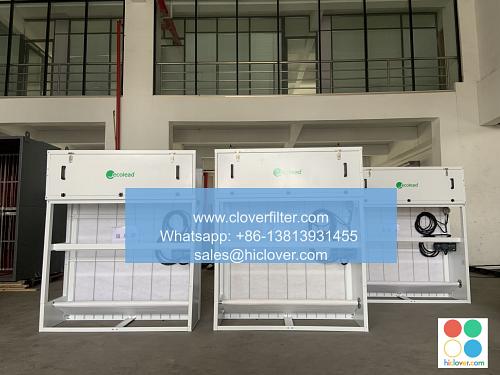10 Types of Air Filters for Home and Office Use

Air Purification 101: 10 Types of Air Filters for Home and Office Use
Introduction
Maintaining good air quality is essential for our overall health and well-being. Indoor air pollution can be a significant concern, especially in homes and offices where people spend most of their time. Air filters play a crucial role in removing pollutants, allergens, and toxins from the air we breathe. In this article, we will explore the 10 most popular types of air filters for home and office use, including their features, benefits, and application areas.
- Description: HEPA filters capture 99.97% of particles as small as 0.3 microns, including dust, pollen, and pet dander.
- Benefits: Effective against common allergens, ideal for people with respiratory issues, and suitable for both home and office use.
- Application areas: Whole-house air filtration systems, air purifiers, and vacuum cleaners.
2. Activated Carbon Filters
- Description: Activated carbon filters use activated charcoal to remove volatile organic compounds (VOCs), gases, and odors.
- Benefits: Effective against chemicals, pesticides, and other VOCs, ideal for people who work with chemicals or paint.
- Application areas: HVAC systems, air purifiers, and odor-controlling filters.
- Description: UV filters use UV light to kill bacteria, viruses, and mold.
- Benefits: Effective against airborne pathogens, ideal for hospitals, schools, and homes with young children or elderly persons.
- Application areas: HVAC systems, air purifiers, and medical facilities.
- Description: Ionizers use negative and positive ions to attract and trap pollutants.
- Benefits: Effective against airborne pollutants, ideal for people with respiratory issues, and suitable for both home and office use.
- Application areas: Air purifiers, water purifiers, and standalone ionizers.
- Description: Disposable filters are designed for one-time use and are often used in HVAC systems.
- Benefits: Easy to replace, cost-effective, and suitable for small to medium-sized offices or homes.
- Application areas: HVAC systems, air purifiers, and small commercial spaces.
- Description: Brushless filters use a combination of mesh and fabric to capture pollutants.
- Benefits: Energy-efficient, low maintenance, and suitable for both home and office use.
- Application areas: Air purifiers, vacuum cleaners, and HVAC systems.
- Description: Washable filters can be cleaned and reused, reducing waste and costs.
- Benefits: Cost-effective, eco-friendly, and suitable for home and office use.
- Application areas: Air purifiers, vacuum cleaners, and HVAC systems.
- Description: Hybrid filters combine different technologies, such as HEPA and activated carbon, for optimal performance.
- Benefits: Effective against a range of pollutants, ideal for both home and office use.
- Application areas: Air purifiers, HVAC systems, and industrial applications.
- Description: Ceramic filters use ceramic elements to capture pollutants, including bacteria, viruses, and mold.
- Benefits: Effective against airborne pathogens, ideal for homes, offices, and medical facilities.
- Application areas: HVAC systems, air purifiers, and medical facilities.
- Description: Self-cleaning filters use advanced technology to clean and maintain themselves.
- Benefits: Low maintenance, energy-efficient, and suitable for both home and office use.
- Application areas: Air purifiers, vacuum cleaners, and HVAC systems.
3. UV (Ultraviolet) Filters
4. Ionizers
5. Disposable Filters
6. Brushless Filters
7. Washable Filters
8. Hybrid Filters
9. Ceramic Filters
10. Self-Cleaning Filters
Conclusion
In conclusion, there are various types of air filters available for home and office use, each with its unique features, benefits, and application areas. By understanding the different types of air filters, you can choose the best one for your specific needs, ensuring a healthier and more comfortable indoor environment.
It looks like you’d like to generate a prompt!
What kind of prompt would you like me to generate? A creative writing prompt, a scientific concept, or perhaps a topic for discussion?
Let me know, and I’ll do my best to come up with a fascinating prompt for you!


